What was ‘nailed to the cross’ in Colossians 2:14-16?
Excerpt from: J.K. McKee’s Frequently Asked Questions: Colossians 2:16. (Download PDF)
How can you say that the Law of Moses is still to be followed by Christians today, when it is quite clear that the Law was nailed to the cross of Christ?
Pastor: Colossians 2:14: Christ took the decrees out of the way on the cross.
“[H]aving canceled out the certificate of debt consisting of decrees against us, which was hostile to us; and He has taken it out of the way, having nailed it to the cross.”
Colossians 2:14 is the common verse that is quoted by many Christians to assert that “the Law of Moses was nailed to the cross of Jesus Christ.” But is this truly what is being said in Colossians 2:14? Did the Torah truly get nailed to the cross, with its high and holy standard of conduct nullified for the post-resurrection era? Could the idea that “the Law was nailed to the cross,” be little more than a sound byte that fails to take into consideration the actual issues present in the surrounding cotext?
Many of today’s Messianic Believers struggle with the Epistle to the Colossians, and the wider issues that this letter originally communicated to a group of Messiah followers in this small First Century city in Asia Minor. One of the main thrusts of Paul writing to the Colossians was to get their attention exclusively focused upon Yeshua the Messiah, who was not only the Father’s Agent in creating the universe before time began—but is the One in whom the universe was made, and is the One in whom and for whom the cosmos are held together (Colossians 1:15-20). Yeshua the Messiah is the One in whom “all the fullness of [the] Deity[1] dwells in bodily form”(Colossians 2:9), a definite statement of Yeshua being God. Contrary to this, a false teaching and philosophy had been circulating in Colossae (Colossians 2:8), which was not only discounting the supremacy of Yeshua as the Divine One, but was appealing to various astral powers and spirits (Colossians 2:15), treating Yeshua as just another intermediary force. The false teaching not only included errant actions like angel worship, self-abasement, intense fasting, and asceticism—but had incorporated a misuse of Torah practices like Sabbath observance or the appointed times—all in an effort to appease various spiritual powers (Colossians 2:16-23).[2]
The only way that Paul can get the Colossians’ attention re-focused, onto Yeshua the Messiah, is to understandably explain to them how significant the salvation work He has accomplished actually is! Paul explains,
“When you were dead in your transgressions and the uncircumcision of your flesh, He made you alive together with Him, having forgiven us all our transgressions, having canceled out the certificate of debt consisting of decrees against us, which was hostile to us; and He has taken it out of the way, having nailed it to the cross” (Colossians 2:13-14).
For the Colossians, tē akrobustia tēs sarkos humōn, paraphrased by the CJB as “your ‘foreskin,’ your old nature” (Colossians 2:13), represented their pre-salvation state. The same power, that resurrected Messiah Yeshua, has now forgiven them and has given them all circumcised hearts and minds. The Colossians have been brought into a realm of life and restored communion with God.
Making the Colossian Believers alive—bringing them to redemption via the work of His Son—God has done something very important on their behalf. As the ESV renders Colossians 2:14, He “cancel[ed] the record of debt that stood against us with its legal demands. This he set aside, nailing it to the cross.” What is this “certificate of debt,” and what are the “decrees against us, which were hostile to us” (NASU)? All readers of Paul’s letter can agree that Colossians 2:14 represents a damning indictment against people that needed to be dealt with via the sacrifice of Yeshua on the cross. Is this the Torah or the Law of Moses? The Greek nomos or “law” is noticeably absent from this verse. The clause of interest is: to kath’ hēmōn cheirographon tois dogmasin. This is literally rendered as “the handwriting in the ordinances [or, dogmas][3] that is against us” (YLT).
There are three main views of what “the certificate of debt” represents, which one is likely to encounter in reviewing the Epistle to the Colossians:
- The debt or penalties incurred from human sin toward God, condemning people without a permanent sacrifice
- Some kind of a book or record in Heaven that kept a roll of condemned people
- The Law of Moses, which if not kept perfectly, condemns all people who break it
Traditional views of Colossians 2:14 dating back to the Protestant Reformation often associated the certificate of debt as either the record of human sin, or the guilt of human sin incurred before God.[4] Another common view of Colossians 2:14, similar to this, sees this certificate of debt as the pronouncement of condemnation that hung over Yeshua as He was dying on the cross (Matthew 27:37; Mark 15:26; Luke 23:38; John 19:19). Both would fit within the scope of what is seen in the lexical definition of cheirographon: “a hand-written document, specif. a certificate of indebtedness, account, record of debts” (BDAG).[5]
One suggestion among some interpreters is that the “certificate of debt” is somehow similar to a Jewish apocalyptic view in which a book recording all of one’s evil deeds was to be remitted. The existence of this book is derived principally from passages seen in the Tanach. Moses appeals to God after the Israelites worshipped the golden calf, “But now, if You will, forgive their sin—and if not, please blot me out from Your book which You have written!” and is told by the LORD, “Whoever has sinned against Me, I will blot him out of My book” (Exodus 32:32, 33). The Psalmist indicates how sinners should “be blotted out of the book of life and may they not be recorded with the righteous” (Psalm 69:28). And Daniel prophesies how in the end, “everyone who is found written in the book, will be rescued” (Daniel 12:1). Furthermore in the Book of Revelation, Yeshua promises those in Sardis, “He who overcomes will thus be clothed in white garments; and I will not erase his name from the book of life” (Revelation 3:5). So, the “certificate of debt” includes a record of human sin that has now been erased or blotted out (Grk. exaleiphō)[6] by the sacrifice of Yeshua at Golgotha (Calvary).
The most common view of the “certificate of debt” that one will find today among lay readers of Colossians is that it represents the Law of Moses nailed to the cross of Yeshua. It proposes that the Torah as cheirographon was a note of indebtedness that required cancellation. Sometimes, scholars who argue for this view provide external evidence from Jewish literature to support this proposal. Testament of Job 11:9-12 from the Pseudepigrapha is one reference to be considered:
“Sometimes they would succeed in business and give to the poor. But at other times, they would be robbed. And they would come and entreat me saying, ‘We beg you, be patient with us. Let us find how we might be able to repay you.’ Without delay, I would bring before them the note and read it granting cancellation as the crowning feature and saying, ‘Since I trusted you for the benefit of the poor, I will take nothing back from you.’ Nor would I take anything from my debtor.”[7]
Today’s Messianic Believers are of the conviction that God’s Torah is still relevant Instruction for His people. While many contemporary Christians have concluded that Colossians 2:14 relates to the Law of Moses being nailed to the cross, many are not, in fact, convinced that the Law in its totality was nailed to the cross. The following are some important opinions to consider, with the last two theologians notably believing that the Torah is not to be followed in the post- resurrection era:
- Donald Guthrie: “Paul dwells on God’s method of He uses the metaphor of a bond…a ‘statement of indebtedness’ which had to be signed by the debtor as an acknowledgment of his debt. The debt was impossible to pay. Moreover it was backed by legal demands, since every trespass is a violation of the law of God….Paul imagines God taking the statement of debts and nailing it to the cross of Christ.”[8]
- James G. Dunn: “The metaphor is probably adapted to the earlier Jewish idea of a heavenly book of the living…as developed in apocalyptic circles into that of books whereas deeds of good and evil were recorded with a view to the final judgment…This is most obviously the background of thought here, with kaqV h`mw/n (‘against us’) confirming that the document in question was one of condemnation, that is, presumably the record of their ‘transgressions’….[W]e should note that it is not the law which is thought of as thus destroyed, but rather its particular condemnation (ceirografon) of transgressions, absorbed in the sacrificial death of the Christ (cf. Rom. 8:3).”[9]
- Douglas Moo: “In causing him to be nailed to the cross, God (the subject of the verb) has provided for the full cancellation of the debt of obedience that we had incurred. Christ took upon himself the penalty that we were under because of our disobedience, and his death fully satisfied God’s necessary demand for due punishment of that disobedience.”[10]
- Ben Witherington III: “V. 14 says Christ’s death wiped out the IOU (a record of debts owed written by the hand of the debtor; Phlm 19; Testament of Job 11) which stood against believers. While cheirograph is used of a receipt in Tob[it] 5.3 and 9.5, it is not found elsewhere in the NT. Here it seems to be a reference to the heavenly book of deeds in which a record of one’s wrongdoings is kept. In fact in Apocalypse of Zephaniah 3.6-9; 7.1-8 the same word is used for that book (cf. Apocalypse of Paul 17; Rev. 5.1-5; 20.12).”[11]
The view of Andrew T. Lincoln also cannot go without mentioning. In his estimation, “to argue that what is in view is not the law per se but only the law in its condemnatory function is to have read too fine a distinction into the verse.” This he has to say to recognize that there have been many throughout Christian history considering Colossians 2:14 to only speak of condemnation upon sinners, a debt that has been incurred. Perhaps this was caused by human disobedience to the Torah, but the Torah itself as intended by God was not the cause (i.e., Deuteronomy 4:1; 5:33; 8:1; et. al.). In contrast to this, Lincoln concludes, “The document itself is said to be opposed to humanity and, when one brings into play the ascetic regulations mentioned later, the clear implication is that it is condemnatory of humans because of their body of flesh.”[12] But why would the Torah be opposed to people if God gave it for the benefit of people? It is only opposed to people when they violate it—not when they follow it! So, Lincoln is correct when claiming that the Torah condemns people because of their uncircumcised body of flesh (Colossians 2:11), or their sin nature, but is incorrect when claiming that the Torah as a whole was just given to condemn. And, the promise of the New Covenant is God writing the Torah onto the hearts of His people (Jeremiah 31:31-34; Ezekiel 36:16-36) needs to be seriously considered here.
Moo, interestingly enough, points out that the view of “certificate of debt” being the Torah in totality, has some problems. He says “that the word [cheirographon] may refer to the Mosaic law, viewed by Paul as a record of human obligation that has not been met…fits a bit awkwardly with the basic sense of the word, since, of course, an IOU is written not by the one to whom the obligation is due (God, the author of the law), but by the one who is in debt (human beings).”[13] The Lord did not give His people the Torah as a record of what they had done, but rather what they should do to live properly: “All these blessings will come upon you and overtake you if you obey the LORD your God” (Deuteronomy 28:2). Severe violation of His Instruction incurred penalties, and so those penalties—which were backed up by certain stipulations that required capital punishment—needed to be dealt with.
What does the work of Yeshua as depicted in Colossians 2:14, with something nailed to the cross, describe for us? Is it the Torah of Moses in its entirety? Or, is it the condemnation upon sinners that He has taken away for us, receiving upon Himself the death that is required of us all? Please consider how of all animal sacrifices specified in the Torah, there is no sacrifice available for intentional sins. Roger Bullard accurately summarizes how, “By forgiving our sins…God erased the record of those sins. What happened on the cross…abolished it and freed us from the grasp of the angelic beings.”[14] The record of sin has been abolished! For this we should all rise in great praise! With the record of sin nailed to Yeshua’s cross and the penalties now remitted, all people have to do is acknowledge this, confessing their sins, and asking the Lord for forgiveness and reconciliation. The Torah has not been abolished, but the capital penalties that stand over those who break it (making unredeemed sinners “under the Law”) have now been paid in full. In nailing the Torah’s condemnation to the cross of Yeshua, we can each realize the full thrust of Isaiah 43:25: “I [the Lord], even I, am the one who wipes out your transgressions for My own sake, and I will not remember your sins.”
Could earlier generations of Christians indeed be right in concluding that the condemnation and/or record of sin is the whole issue of what was nailed to the cross in Colossians 2:14?
It is perfectly legitimate to recognize how the “certificate of debt,” that has been paid by Yeshua’s sacrifice, is the condemnation and record of human sin. The power of this condemnation was found in various “decrees against us,” the stated death penalties for high crimes as specified in the Torah. It is not at all incorrect to recognize that by His death and shed blood, our relationship to the Torah has certainly been changed, but that does not mean that the Torah is to be thrown by the wayside and never studied or meditated upon (Psalm 119:15, 27). The Torah remains relevant instruction that is to be upheld and taught as a standard of God’s righteousness and holiness (Romans 3:31), but the problem of a permanent sacrifice for sin has now been taken care of (Hebrews 10:11-12).
(It is noteworthy that many evangelical Protestant churches today hold services on Good Friday where people can write their sins or transgressions on small pieces of paper, and then actually nail them to a cross in the sanctuary, representative of how the record of human sin has been taken care of by Jesus’ sacrifice. This concurs with Colossians 2:14 representing the condemnation upon human sin.)
With this in mind, though, I have still encountered people in today’s Messianic movement who would argue for a kind of theonomy.[15] They think that the death penalty decreed upon sinners for various crimes in the Torah should still be enacted—even with Yeshua’s sacrifice permanently atoning for the human sin problem. This would mean, at least in principle, that if one were to discover adulterers or homosexuals in the assembly, they should be tried and executed. This does make many, most especially myself, feel very uncomfortable. In 1 Corinthians 5, rather than demanding that the sexually immoral be executed for their sins, the Apostle Paul rules that they be excommunicated from the assembly. This is not because there was no proper Jewish court for them to be condemned by, but as he states it, their sin will get the better of them and they will die as a consequence if they fail to repent (1 Corinthians 5:5).[16] Paul knew the gravity of the cross, and would never promote stoning people as a method of handling sins after the resurrection—since he himself was responsible for errantly stoning or overseeing the deaths of many Jewish Believers (Acts 7:58; Galatians 1:13; 1 Corinthians 15:9) prior to encountering the Lord on the Damascus Road!
History is replete with post-crucifixion examples of where various societies and religious movements have tried to, albeit unsuccessfully, enact capital punishment for every high crime specified in the Torah. There is perhaps no worse example of this then the complicated record of the English Reformation, where Catholic and Protestant monarchs alike would try those of the other side as heretics, believing them to be in violation of God’s Law, and burning many at the stake. About the only significant exception for executing a criminal would be for murder, the death penalty for murderers being a Creation ordinance (cf. Genesis 9:6). And even that has to be done very, very carefully.[17]
Even with the Torah’s death penalty upon sinners now remitted via the sacrifice of Yeshua, this does not at all mean that it is unimportant to know those sins in the Torah that prescribe the death penalty. While all of our collective human sin is what nailed the Lord to the cross, it is those very specific sins that carry capital punishment which ultimately condemned Him. When we review the weekly Torah portions and examine those regulations, which if violated caused ancient persons to be stoned or hanged until dead, we should stop for a moment and recognize that the Messiah came so that those penalties would not need to be enacted any more (cf. Romans 10:4, Grk.). They have all been wiped away by His suffering for us. With final redemption now available, we need to remember how “the kindness of God leads you to repentance” (Romans 2:4). If we should ever suffer for Him, it should only come as we serve Him and are possibly persecuted—not that we have to suffer as He did to attain eternal life.[18]
Endnotes:
[1] Grk. to plērōma tēs Theotētos; with the Deity including the definite article.
[2] Consult the author’s article “Does the New Testament Annul the Biblical Appointments?”
[3] This is where the definition of dogma as “a public decree, ordinance” (LS, 207) prescribing a death penalty, is useful to keep in mind.
[4] For one example, John Wesley, Explanatory Notes Upon the New Testament, 747 says: “This was not properly our sins themselves (they were the debt), but their guilt and cry before God.”
[5] BDAG, 1083.
[6] In a classical context, the verb exaleiphō means “to wipe out, obliterate,” or “metaph., like Lat. delere, to wipe out, destroy utterly” (LS, 269).
[7] R.P. Spittler, trans., “Testament of Job,” in James H. Charlesworth, ed., The Old Testament Pseudepigrapha, Vol 1 (New York: Doubleday, 1983), 844.
[8] Donald Guthrie, “Colossians,” in NBCR, 1147.
[9] James D.G. Dunn, New International Greek Testament Commentary: The Epistles to the Colossians and to Philemon (Grand Rapids: Eerdmans, 1996), pp 164, 165, 166.
[10] Douglas J. Moo, Pillar New Testament Commentary: The Letters to the Colossians and to Philemon (Grand
Rapids: Eerdmans, 2008), pp 211-212.
[11] Witherington, Philemon-Colossians-Ephesians, 158.
[12] Andrew T. Lincoln, “The Letter to the Colossians,” in NIB, 11:625.
[13] Moo, Colossians-Philemon, pp 209-210.
[14] Roger Bullard, “The Letter of Paul to the Colossians,” in Walter J. Harrelson, ed., et. al., New Interpreter’s Study Bible, NRSV (Nashville: Abingdon, 2003), 2111.
[15] D. Thomas Lancaster, Restoration: Returning the Torah of God to the Disciples of Jesus (Littleton, CO: First Fruits of Zion, 2005), 76 indicates, “the strict measures of Torah justice—stoning and the like—are not applicable unless one is in the land of Israel under the authority of a duly ordained Torah court of law like the Sanhedrin.” While he admits that a Sanhedrin court in Israel would be able to stone someone, he thankfully says, “As much as we might sometimes like to stone someone, the Torah forbids us from vigilante justice of that sort,” recognizing how only authorized people could do this. But in holding to this opinion, he does overlook the great significance of Yeshua’s sacrifice for the covering of such sin and how these penalties have now largely been remitted. (Furthermore, even with the possibility of a Sanhedrin court reestablished in Israel sometime in the future, it seems unlikely that the Israeli government would give up control of the criminal justice system.)
Perhaps the only exception, this side of Yeshua’s resurrection, would be the death penalty for murder as a Creation ordinance (cf. Genesis 9:5-6)—and even this should be used quite infrequently.
[16] “I have decided to deliver such a one to Satan for the destruction of his flesh, so that his spirit may be saved in the day of the Lord Yeshua” (1 Corinthians 5:5).
[17] For a further discussion, consult Walter C. Kaiser’s remarks in Five Views on Law and Gospel, pp 155-156.
[18] For a further discussion of these and the relevant surrounding passages, consult the author’s article “The Message of Colossians and Philemon” and his commentary Colossians and Philemon for the Practical Messianic.

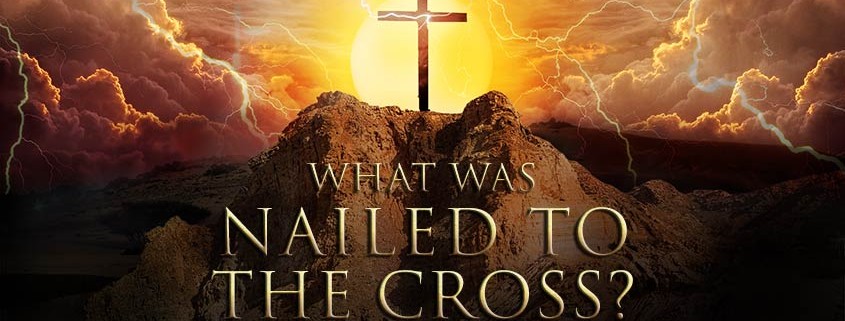

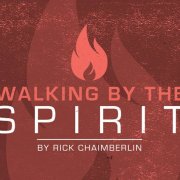
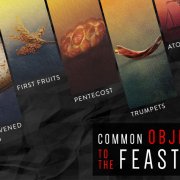

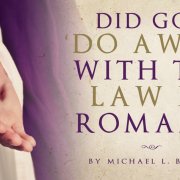
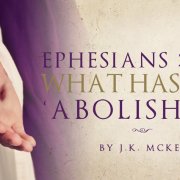
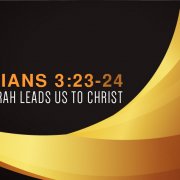
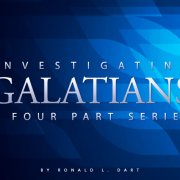
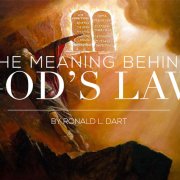

Leave a Reply
Want to join the discussion?Feel free to contribute!